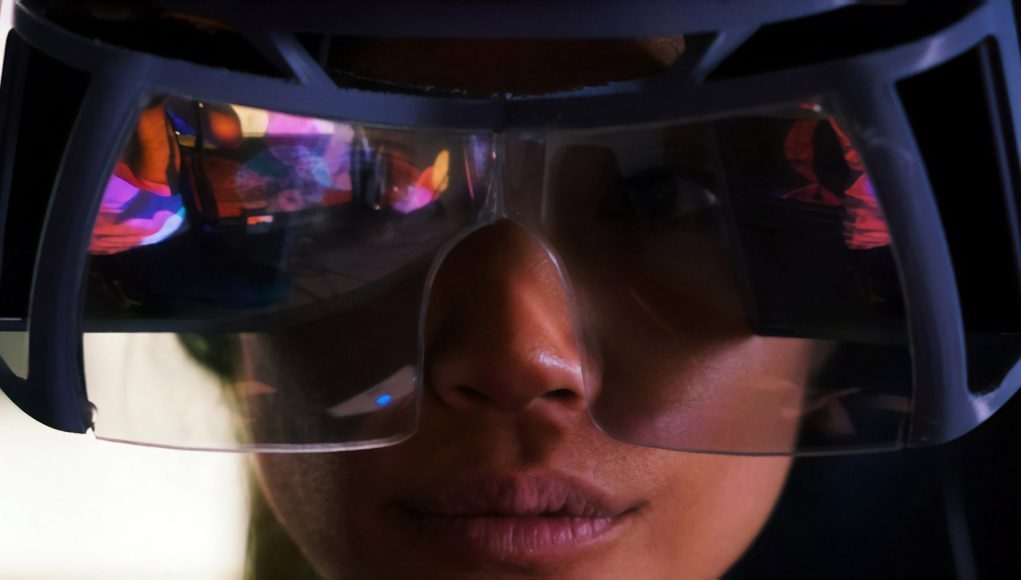 Keiichi Matsuda went from being a dystopian filmmaker to becoming the Vice President of Design at hand-tracking company Leap Motion. Matsuda is probably the most famous for his HYPER-REALITY dystopian film that imagined a commodified & gamified AR future where companies are vying for your attention regardless of your physical context. He was trying to push the current philosophical orientation to the logical extreme, not because he wanted to live into that future himself, but more from a perspective of a cautionary tale thinking about how this is actually a plausible near future if we don’t do anything different. One of the co-founders of Leap Motion reached out to Matsuda to invite him to help creating & influence the future of spatial computing since he has been creating functional and pragmatic spatial computing interfaces in his films since 2010.
Keiichi Matsuda went from being a dystopian filmmaker to becoming the Vice President of Design at hand-tracking company Leap Motion. Matsuda is probably the most famous for his HYPER-REALITY dystopian film that imagined a commodified & gamified AR future where companies are vying for your attention regardless of your physical context. He was trying to push the current philosophical orientation to the logical extreme, not because he wanted to live into that future himself, but more from a perspective of a cautionary tale thinking about how this is actually a plausible near future if we don’t do anything different. One of the co-founders of Leap Motion reached out to Matsuda to invite him to help creating & influence the future of spatial computing since he has been creating functional and pragmatic spatial computing interfaces in his films since 2010.
LISTEN TO THIS EPISODE OF THE VOICES OF VR PODCAST
Audio PlayerLeap Motion recently announced their open source AR HMD reference design called Project North Star, which has a 95° wide by 70° high field of view with 65% stereo overlap & 1,600 × 1,440 per eye. By default it will be a tethered AR HMD with a 180° x 180° hand-tracking volume. The full open source design will be released within the next week, and Leap Motion won’t be manufacturing their own version, but rather charge a hand-tracking licensing fee for their hand tracking software.
I stopped by Leap Motion’s offices during GDC to try out some of their latest hand-gesture user interfaces (in VR not in their AR prototype), and I had a chance to talk to Matsuda about his journey into spatial computing through architecture and making speculative sci-fi films, how spatial design can influence someone’s emotions, the iterative process of designing for fun and satisfying feelings when creating hand gesture interfaces, as well as the destruction of identity, the blurring of lines between digital and physical realities, the collaborative building of worlds, democratization of architecture, how spatial computing is more natural and intuitive, and building interfaces that are so immersive that we feel as though we’re inside of them.
.@LeapMotion revealed Project North Star, an open source AR HMD design funded via hand-tracking software licensing fees.
CORRECTION: The reference design has a FOV that's 95° high x 70° wide with 65% stereo overlap with 120Hz, 1600×1440 resolution per eye:https://t.co/bPne3HFrBV pic.twitter.com/Y9lNINO5e3— Kent Bye VoicesOfVR (@kentbye) April 9, 2018
Here are a number of Matsuda’s films that are worth checking out to see his evolution of spatial computing design ideas over the past eight years:
- HYPER-REALITY – May 16, 2016
- Augmented (hyper)Reality: Domestic Robocop – January 6, 2010
- Augmented City 3D – August 20, 2010
- CELL – October 4, 2011
- An exploration of the quantification of digital identity
- Alchemy – August 27, 2012
- Explores immersive interfaces to tell a spatial story of Veuve Clicquot wine
- The Technocrat Retrofit of London – May 31, 2009
- Bossarica – Neon Sign – February 21, 2011
- Music video blending projection mapping with 2D & 3D compositing
- Essay on Cities for Cyborgs: 10 Rules
Matsuda has an upcoming immersive VR film called Merger.
Support Voices of VR
- Subscribe on iTunes
- Donate to the Voices of VR Podcast Patreon
Music: Fatality & Summer Trip







